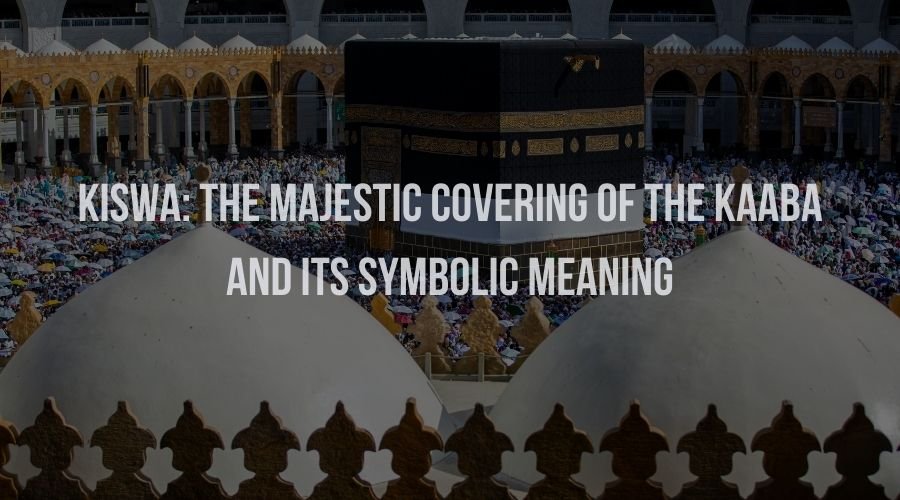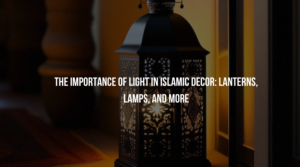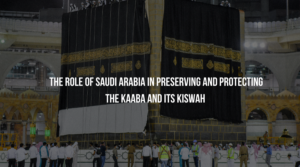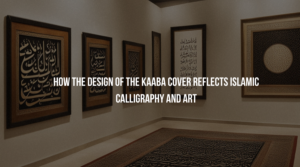Kiswa is a piece of cloth that covers the holy Kaaba in Makkah. The tradition of changing the Kaaba takes place every year on the ninth day of the Islamic month of the Dhu al – Hijjah, which coincides with the day of Arafat.
Kaaba is also known as “Al – Bait Al – Ateeq”, which means “The Ancient House”. It is the most admired place for Muslims, they visit from all over the world for their annual pilgrimage known as Hajj. The majestic curtain that covers the holy Kaaba has great importance in Muslim culture, which is known as kiswah.
History Behind The Kaaba Cover
As the tradition of kiswa started, history shows two options.
First, it was Prophet Ismael or one of Prophet Muhammad’s ancestors who first covered the holy kaaba with a kaaba cover.
Initially, the kaaba cover comes from many countries in all colours and in all kinds of materials. The covering of the holy kaaba with a kaaba cover is considered as a privilege and honour, thus there is much more competition between the important groups and families to do this honour.
The parts of the Middle East and the tribes from the Arabian Gulf collaborated to make sure that the kaaba was never uncovered. Different kinds of materials were brought from different countries for kaaba cover.
During the time of Prophet Mohammad, the clothes for Kiswah were brought from Yemen and changed and renewed twice a year, once before Ramadan and then during Hajj.
At that time, people from Egypt were well known for their intricate weaving of complex designs in all kinds of materials and were responsible for supplying the kaaba cover.
During the Ottoman Empire, the kiswah was made up of black silk cloth, on which various complex designs and embroidery were done. From that day kiswah has remained black in colour.
Three Parts of Kaaba Kiswa
The kiswa is divided into three parts: first is the Sitaar which is the curtain of the kaaba door, second is the inner linen inside the kaaba and the “Hizam ” which is the belt of the kaaba.
All these parts of the kaaba cover are made in an exclusive and specialised kaaba kiswah factory by skilled people.
The Sitaar, curtain of the holy kaaba is 6.5 metres high and 3.5 metres wide and is made up of black silk cloth with a thick green lining. The Islamic designs and the verses from the Quran are promptly designed and written upon it. All these designs are covered in silver wiring plated with gold.
The curtains of the kaaba are hand woven and thus call for accuracy and skill as well as genuine artistry. The making of the kaaba kiswah consists of several phases from the beginning with dyeing the green silk cloth.
The verses and the designs are drawn and embroidered on the green silk cloth. Among all the steps, the most delicate and time taking process is embroidery, which is stitched in white over the intricate designs and printed verses.
Then this green silk cloth is draped over the inner walls of the kaaba as well as on its ceiling. This inner lining is changed every three to five years.
The third and the main part of the kaaba kiswah is the “Hizam” which is the belt of the kaaba. It is an excellent work of art. It is placed two-thirds from the ground and the top of the kaaba. The Hizam looks like a crown on the kaaba with its golden beauty and radiance.
The Hizam is a belt which is 47 metres in length and 95 cm wide. It is a belt woven on verses and Islamic designs embroidered on thick silver wiring, and densely coated in gold.
Unknown Facts About The Holy Kaaba
- The original Kaaba has two doors and a window, one door is for the entrance and the second one is for the exit. And for a period it also has a window. But now it has only one door without any windows.
- As we are used to seeing the kaaba in the only colour black with golden and silver wirings, we can’t imagine it in any other colour. This tradition seems to have started at the time of the Abbasids. And before this, the kaaba was covered with multi-coloured cloth red, green and even white.
- As kaaba is situated at the bottom of a valley when it rains – valleys tend to flood. For days the half kaaba is submerged in water. But it does not affect the Muslims to perform the Tawaf. They just started swimming around the kaaba.
- The kaaba used to open twice a week for anyone to come and pray. But due to the huge expansion in the number of pilgrims, kaaba started opening twice a year for dignitaries and exclusive guests only.
- The kaaba was never meant to be a cube, it actually started out shaped as a rectangle. The original dimensions of the sacred house included a semi-circular area which is known as Hijr Ismail.




